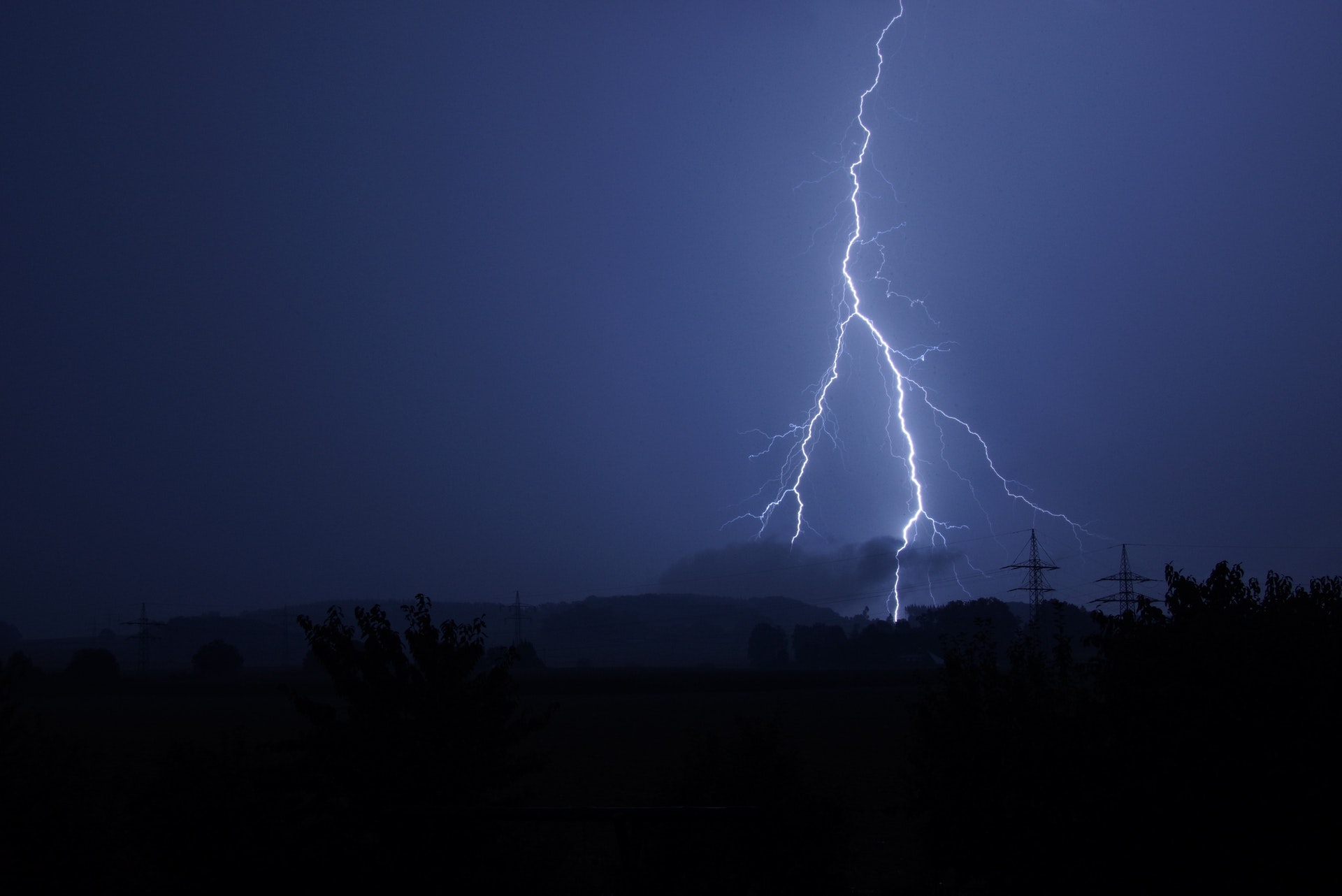
Lightning and subvisible discharges produce molecules that clean the atmosphere
Science Daily -- Lightning and subvisible discharges produce molecules that clean the atmosphere Date: April 29, 2021
Source:
Penn State
Summary:
Scientists have found that lightning bolts and, surprisingly, subvisible discharges that cannot be seen by cameras or the naked eye produce extreme amounts of the hydroxyl radical and hydroperoxyl radical. The hydroxyl radical is important in the atmosphere because it initiates chemical reactions and breaks down molecules like the greenhouse gas methane.
FULL STORY
Lightning bolts break apart nitrogen and oxygen molecules in the atmosphere and create reactive chemicals that affect greenhouse gases. Now, a team of atmospheric chemists and lightning scientists have found that lightning bolts and, surprisingly, subvisible discharges that cannot be seen by cameras or the naked eye produce extreme amounts of the hydroxyl radical -- OH -- and hydroperoxyl radical -- HO2.
The hydroxyl radical is important in the atmosphere because it initiates chemical reactions and breaks down molecules like the greenhouse gas methane. OH is the main driver of many compositional changes in the atmosphere.
"Initially, we looked at these huge OH and HO2 signals found in the clouds and asked, what is wrong with our instrument?" said William H. Brune, distinguished professor of meteorology at Penn State. "We assumed there was noise in the instrument, so we removed the huge signals from the dataset and shelved them for later study."
The data was from an instrument on a plane flown above Colorado and Oklahoma in 2012 looking at the chemical changes that thunderstorms and lightning make to the atmosphere.
But a few years ago, Brune took the data off the shelf, saw that the signals were really hydroxyl and hydroperoxyl, and then worked with a graduate student and research associate to see if these signals could be produced by sparks and subvisible discharges in the laboratory. Then they did a reanalysis of the thunderstrom and lightning dataset.
"With the help of a great undergraduate intern," said Brune, "we were able to link the huge signals seen by our instrument flying through the thunderstorm clouds to the lightning measurements made from the ground."
The researchers report their results online today (April 29) in Science First Release and the Journal of Geophysical Research -- Atmospheres.
Brune notes that airplanes avoid flying through the rapidly rising cores of thunderstorms because it is dangerous, but can sample the anvil, the top portion of the cloud that spreads outward in the direction of the wind. Visible lightning happens in the part of the anvil near the thunderstorm core.
"Through history, people were only interested in lightning bolts because of what they could do on the ground," said Brune. "Now there is increasing interest in the weaker electrical discharges in thunderstorms that lead to lightning bolts."
Most lightning never strikes the ground, and the lightning that stays in the clouds is particularly important for affecting ozone, and important greenhouse gas, in the upper atmosphere. It was known that lightning can split water to form hydroxyl and hydroperoxyl, but this process had never been observed before in thunderstorms.
What confused Brune's team initially was that their instrument recorded high levels of hydroxyl and hydroperoxyl in areas of the cloud where there was no lightning visible from the aircraft or the ground. Experiments in the lab showed that weak electrical current, much less energetic than that of visible lightning, could produce these same components.
While the researchers found hydroxyl and hydroperoxyl in areas with subvisible lightning, they found little evidence of ozone and no evidence of nitric oxide, which requires visible lightning to form. If subvisible lightning occurs routinely, then the hydroxyl and hydroperoxyl these electrical events create need to be included in atmospheric models. Currently, they are not.
According to the researchers, "Lightning-generated OH (hydroxyl) in all storms happening globally can be responsible for a highly uncertain but substantial 2% to 16% of global atmospheric OH oxidation."
"These results are highly uncertain, partly because we do not know how these measurements apply to the rest of the globe," said Brune. "We only flew over Colorado and Oklahoma. Most thunderstorms are in the tropics. The whole structure of high plains storms is different than those in the tropics. Clearly we need more aircraft measurements to reduce this uncertainty."
Other researchers at Penn State include Patrick J. McFarland, undergraduate; David O. Miller, doctoral recipient; and Jena M. Jenkins, doctoral candidate, all in meteorology and atmospheric science.
Also working on the project were Eric Bruning, associate professor of atmospheric science, Texas Tech University; Sean Waugh, research meteorologist, and Donald MacGorman, senior research scientist, both at NOAA National Severe Storm Laboratory; Xinrong Ren, physical scientist, NOAA Air Resources Laboratory; Jingqiu Mao, assistant professor of atmospheric chemistry, Univeristy of Alaska; and Jeff Peischl, senior professional research assistant, Cooperative Institute for Research in Environmental Sciences, University of Colorado, Boulder.
The National Science Foundation, NASA, and the National Oceanic and Atmospheric Administration supported this work.
Story Source:
Materials provided by Penn State. Original written by A'ndrea Elyse Messer. Note: Content may be edited for style and length.
Journal References:
W. H. Brune, P. J. McFarland, E. Bruning, S. Waugh, D. MacGorman, D. O. Miller, J. M. Jenkins, X. Ren, J. Mao, J. Peischl. Extreme oxidant amounts produced by lightning in storm clouds. Science, 2021; eabg0492 DOI: 10.1126/science.abg0492
Jena M. Jenkins, William H. Brune, David O. Miller. Electrical Discharges Produce Prodigious Amounts of Hydroxyl and Hydroperoxyl Radicals. Journal of Geophysical Research: Atmospheres, 2021; DOI: 10.1029/2021JD034557
Cite This Page:
MLA
APA
Chicago
Penn State. "Lightning and subvisible discharges produce molecules that clean the atmosphere." ScienceDaily. ScienceDaily, 29 April 2021.


 How to resolve AdBlock issue?
How to resolve AdBlock issue? 